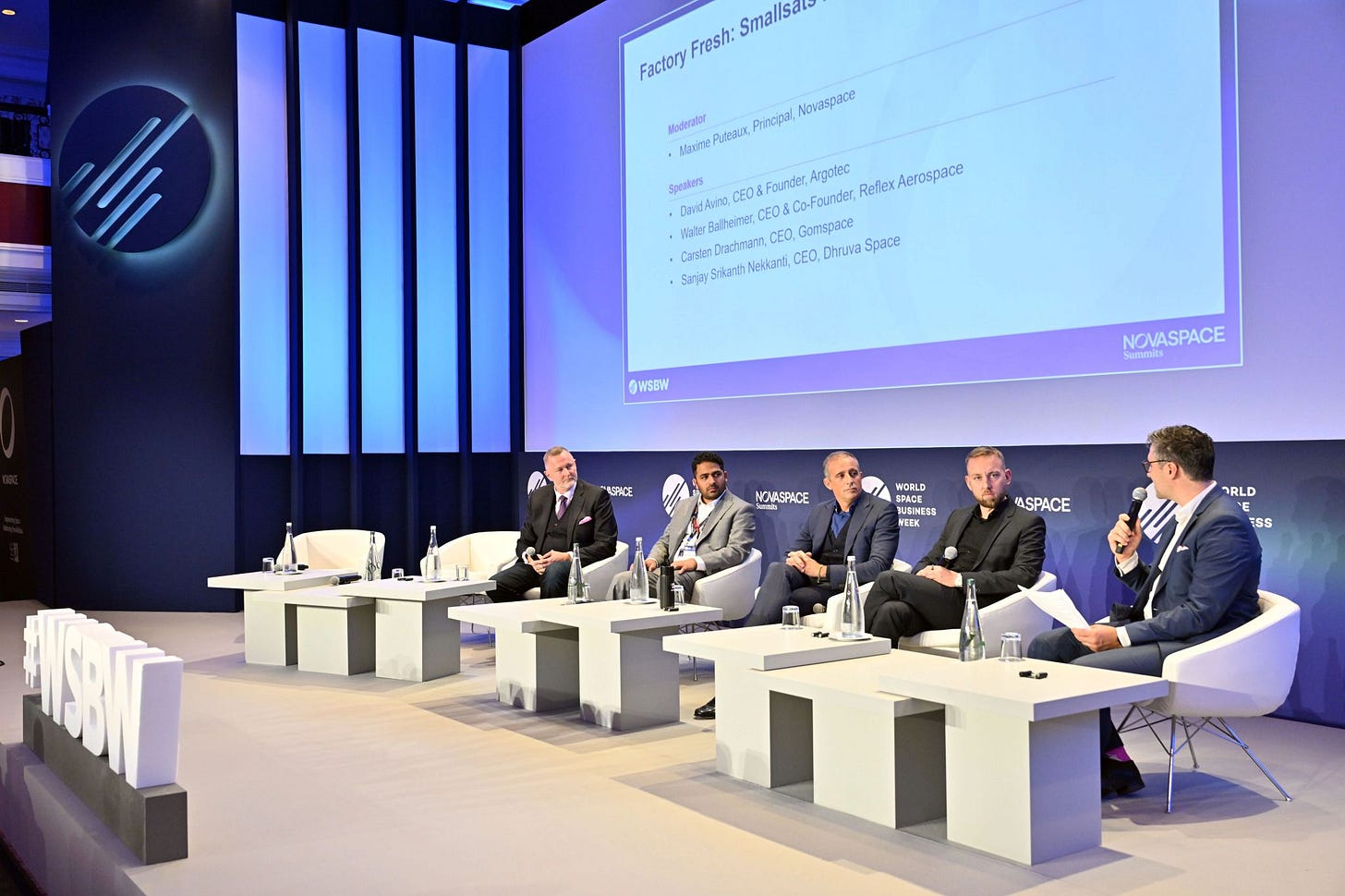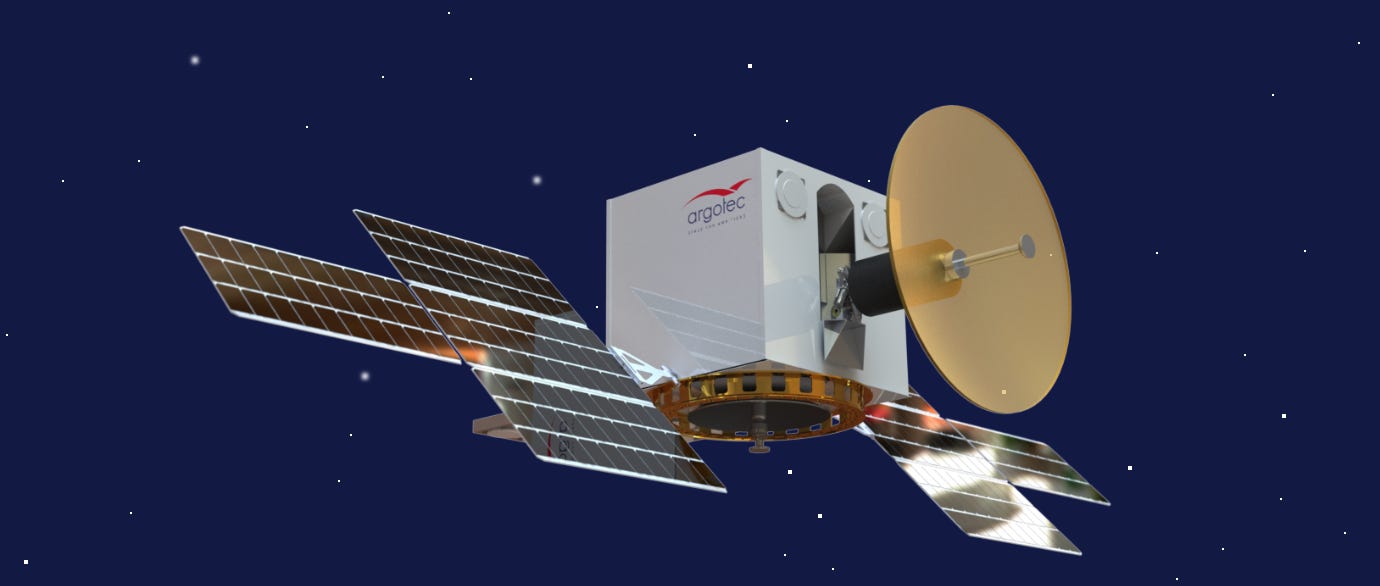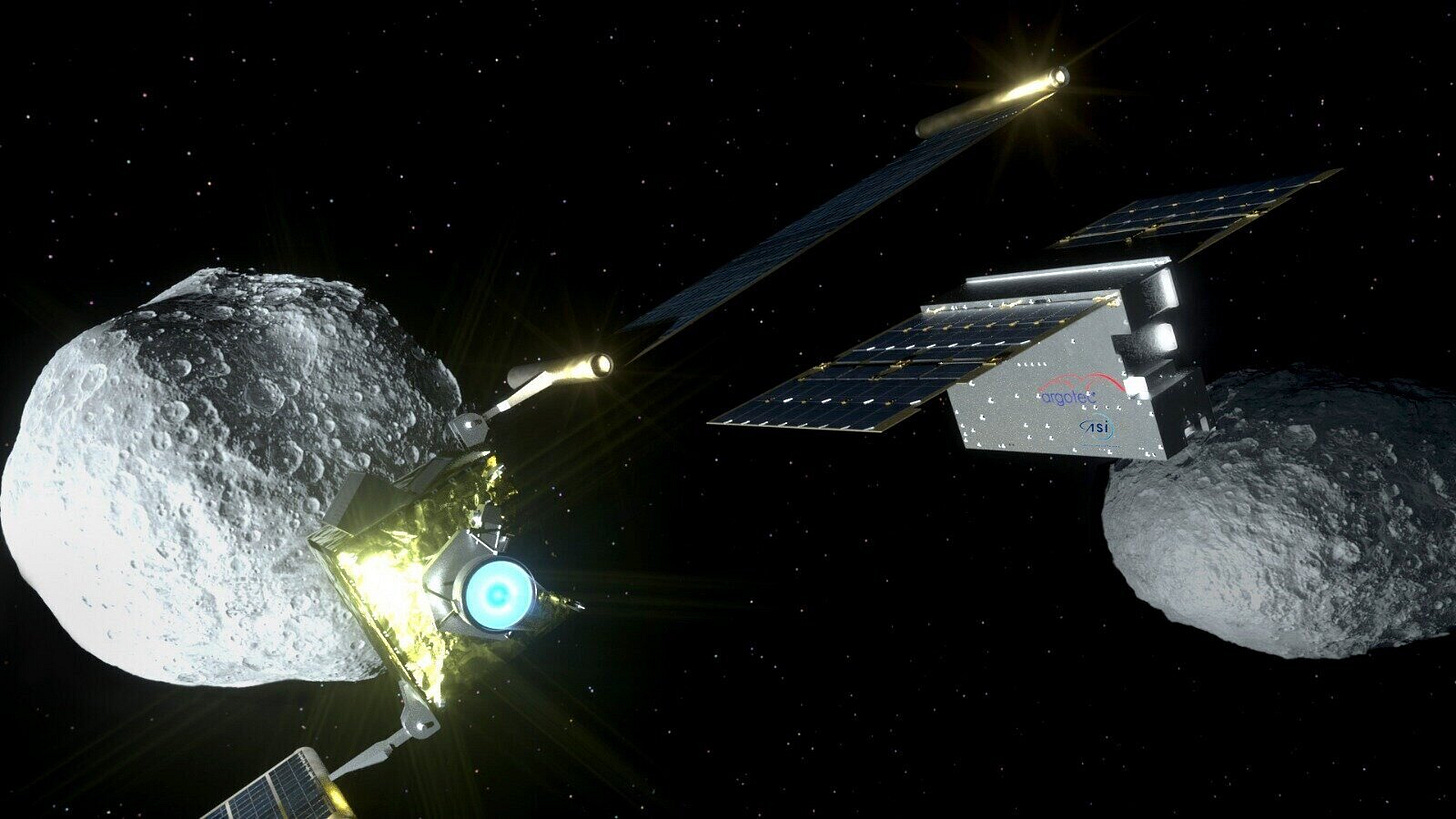The WSBW 2024 Editions: David Avino, Founder and CEO of Italy's Argotec
MESM's Paris correspondent, Manel Kerioui, sat down with David Avino to discover the capabilities and regional ambitions of Argotec.
Italy’s Argotec has carved out a niche in the highly competitive global space sector as a full-service space services company that provides everything from satellite platforms for Earth orbit and cislunar space through to astronaut training and space science. With Argotec now aiming its sights on the rapidly growing space sectors in Saudi Arabia and the UAE, Middle East Space Monitor’s Paris correspondent Manel Kerioui sat down with David Avino, Argotec’s founder and CEO on the sidelines of Novaspace’s World Space Business Week held in Paris, France, on 16-20 September 2024. The Middle East Space Monitor is proud to be a media partner for the 2024 World Space Business Week.
Q: Argotec has evolved from a small team to a significant player in space innovation, working with NASA, ESA, and the Italian Space Agency. How does Argotec balance its Italian roots with its global ambitions?
A: You know, the space business can never be limited to Italy, to a region, or even a continent—it's global.
When I founded Argotec, I always had a global market in mind. From the start, it was about being excellent at what we do and reaching beyond Italy. Early on, we began working with the European Space Agency in Germany, and we now have labs and facilities in Italy. We've recently expanded into the US, where our team is growing, and we’re continuing to look at strategic markets for the future, particularly the Middle East.
The Middle East is becoming increasingly important—it’s not just about the UAE or Saudi Arabia; the whole region is rapidly growing in space capabilities. There’s huge potential, and their pace of development is impressive. That's why we're strategically focused on expanding into that market as well. So, while we remain proud of our Italian roots, our strategy has always been about broadening our reach. Beyond Europe and the US, the Middle East is a key region for our future expansion plans.
Q: What are your key strategies for scaling the company’s presence internationally?
A: From the beginning, we've operated under a concept we call the "Only Now" approach, meaning we focus on developing technology internally when necessary, but we don't waste time reinventing the wheel. As we scale up, partnerships are becoming increasingly important.
Collaborating with companies that specialize in specific areas—whether it’s technology, services, or something they're better at than us—is key to accelerating our growth. These partnerships, especially with firms outside of Italy and Europe, will play a crucial role in helping us scale more efficiently and expand our global presence.

Q: The ANDROMEDA project aims to provide critical lunar communication and navigation infrastructure. Could you elaborate on how Argotec envisions its role in supporting the growing commercial and scientific missions to the Moon?
A: The Moon is increasingly becoming the next frontier for space exploration, with nations around the world focusing on it as a significant milestone. The Artemis Accords, which have been signed by various countries, highlight the collaborative effort required for such a grand endeavor. These projects are vast and complex, necessitating international cooperation.
Collaboration is crucial for expanding our capabilities, developing new technologies, and tackling the challenges posed by these ambitious projects. Unlike the lunar missions of 50 years ago, where the goal was merely to visit and return, our current objective is to establish a long-term presence on the Moon. This involves a variety of activities, including scientific research, robotic operations, rover missions, and even mining.
To support these activities, we need robust communication systems. This includes maintaining contact between rovers, scientific instruments, humans, landers, and orbiters. Effective communication is essential not just for mission control but also for personal connections, allowing astronauts to stay in touch with their families.
The ANDROMEDA project is designed to address this need by providing a comprehensive communication environment. This encompasses data transfer, video conferencing, and internet connectivity. Our journey began back in 2017 when we first considered this project, building on our existing satellite platform. We envisioned integrating transponders for lunar communications and began developing antennas and other related technologies.
In 2019, we partnered with NASA JPL to advance this vision. Together, we are creating the next generation of transponders designed not just for lunar missions but also for deep space communication. This partnership is central to developing the telecommunication systems that will support ANDROMEDA. The project will feature a constellation of satellites in various orbits, facilitating communication between all mission elements and potentially with families on Earth as well.
Q: What are some of the challenges you anticipate in deploying this system?
A: The challenges are significant because we are working in a completely new environment. One major challenge is ensuring as much continuity of communication as possible. While continuous communication isn't immediately required, it will be crucial in the future, especially when people are permanently stationed on the Moon. Just like with the International Space Station, communication needs to be available whenever required.
Another challenge is establishing a new communication system with a new generation of transponders and satellites. Initially, there will be only a few rovers and landers, meaning the communication bandwidth will be relatively small. As more hardware and people arrive on the Moon's surface, we will need to provide a larger throughput for communication. This will be a growing challenge, and it’s likely that, similar to mobile communication systems on Earth, there will be more operators involved in managing this expanding network.
Q: Argotec is pioneering the concept of “space as a service” through your ASSE initiative. How do you envision companies from non-space sectors utilizing space for innovation?
A: When we started exploring this concept in 2013, and more concretely in 2015, we aimed to bridge the gap between space and non-space industries. A notable example is our collaboration with Lavazza, which led to a coffee maker being sent to the International Space Station. While this wasn't a commercial venture, it demonstrated the importance of catering to the needs of people living in harsh environments, like future space tourists.
Bringing companies from outside the space sector into space is crucial for expanding the industry. Space has traditionally been seen as a niche area, but to increase revenues and growth, we need to involve a broader range of industries. In 2015, we launched the "Open Space" initiative, which is a trademark concept designed to open space opportunities to non-space companies.
The idea is to foster collaboration between space experts and companies from various sectors. Often, these companies are unfamiliar with space and its potential applications, and vice versa. By working together, we can identify and address their needs, encouraging investment in space and driving future industry development.
This approach is essential for achieving ambitious projections for the space economy, such as the $1 trillion market value anticipated in the coming years. The growth of the space industry will accelerate as more non-space industries engage with and invest in space.
Q: Argotec has an impressive track record supporting astronauts and payloads aboard the ISS. What new human spaceflight initiatives are on the horizon for Argotec, and how does your work with ESA and NASA shape future missions involving human exploration?
A: Argotec has conducted over 20 experiments on the ISS, managing them from our control center in Torino, Italy. Our ongoing work is deeply intertwined with the astronauts and their harsh environment, allowing us to develop new ideas, projects, and solutions for future space exploration.
We maintain a dedicated team at the European Astronaut Center, closely collaborating with European astronauts. This close partnership is crucial for paving the way for future missions. Our focus extends to enhancing the comfort of astronauts, who experience multiple sunrises each day, which can disrupt their circadian rhythms. Addressing factors such as temperature, lighting, and ergonomics within the space modules is essential.
Looking ahead, we are working on several projects to improve these conditions. Not only are we seeking funding from governments and space agencies, but we are also exploring investment opportunities from the public and private sectors. For instance, a recent example involves Prada’s collaboration with Axiom, which has introduced fashion into space exploration. This partnership aims to enhance the comfort and functionality of space suits, showcasing how different sectors can contribute to human spaceflight.
Overall, our approach is to find synergies between various industries to support and advance human spaceflight efforts.
Q: Argotec’s microsatellite platforms, like HAWK, are designed for robust performance even in deep space conditions. Could you discuss your plans for expanding Argotec’s satellite capabilities, and how your technology is positioned to meet the needs of both commercial and governmental clients?
A: HAWK is designed with two crucial elements: reliability and sustainability. Reliability ensures that the platform can endure the harsh conditions of space and maintain performance over time. Sustainability is key because using inexpensive components might reduce initial costs, but it often leads to higher failure rates and, consequently, more space debris. This could make it increasingly difficult to operate in low Earth orbit (LEO) due to the growing debris problem.
When developing the HAWK platform, we focused on reliability from the start. We aim to create satellites and platforms that offer long-lasting performance. Whether a customer is from the defense sector or another industry, the priority is reliable service rather than the cost of the satellite itself. Customers need timely, accurate data and dependable service.
Our track record supports this approach. Recently, our platform was recognized as the Mission of the Year in 2023, reflecting our commitment to meeting customer needs and delivering high-quality solutions.
Looking ahead, our market is moving in a direction where reliability and timely service are paramount. We are prepared to meet these needs by providing satellites and data precisely when and where our customers require them. While there are other topics like expanding into the Middle East, our focus remains on enhancing our satellite capabilities and maintaining our high standards of service and reliability.
Q: With the growing interest in space technology in the Middle East, what are Argotec’s objectives and interests in this market? Are there specific partnerships or projects you’re exploring with countries in the region, such as Saudi Arabia or the UAE?
A: Recently, we established an office in Dubai, reflecting our strong belief in the future of space exploration and the space industry in the Middle East. To effectively serve this market, we recognize the need to have a physical presence there, which includes not just an office but also dedicated facilities.
Our approach involves partnering with local companies and governments and attracting local investors. We aim to combine our expertise and investment with local support to foster successful collaborations.
The UAE and Saudi Arabia are key focuses for us. The UAE’s space agency is highly regarded, and its vision for the future of space is impressive. Similarly, Saudi Arabia's Vision 2030 is ambitious, with significant investments in defense and space, exemplified by entities like SAMI.
We are actively seeking partnerships and investors in the region to support the establishment of more facilities and to build long-term relationships. Our goal is to hire local talent, secure government contracts, and develop these projects in collaboration with regional stakeholders.
This strategy mirrors our approach in the US, where we employ local staff and work closely with American partners while integrating our expertise from Italy and the US. Similarly, in the Middle East, our facilities will be staffed by local personnel who will gain expertise in-house, supported by our international experience.
Overall, we are open to partnerships and investments from the Middle East to help us expand our presence and advance our projects in the region.






